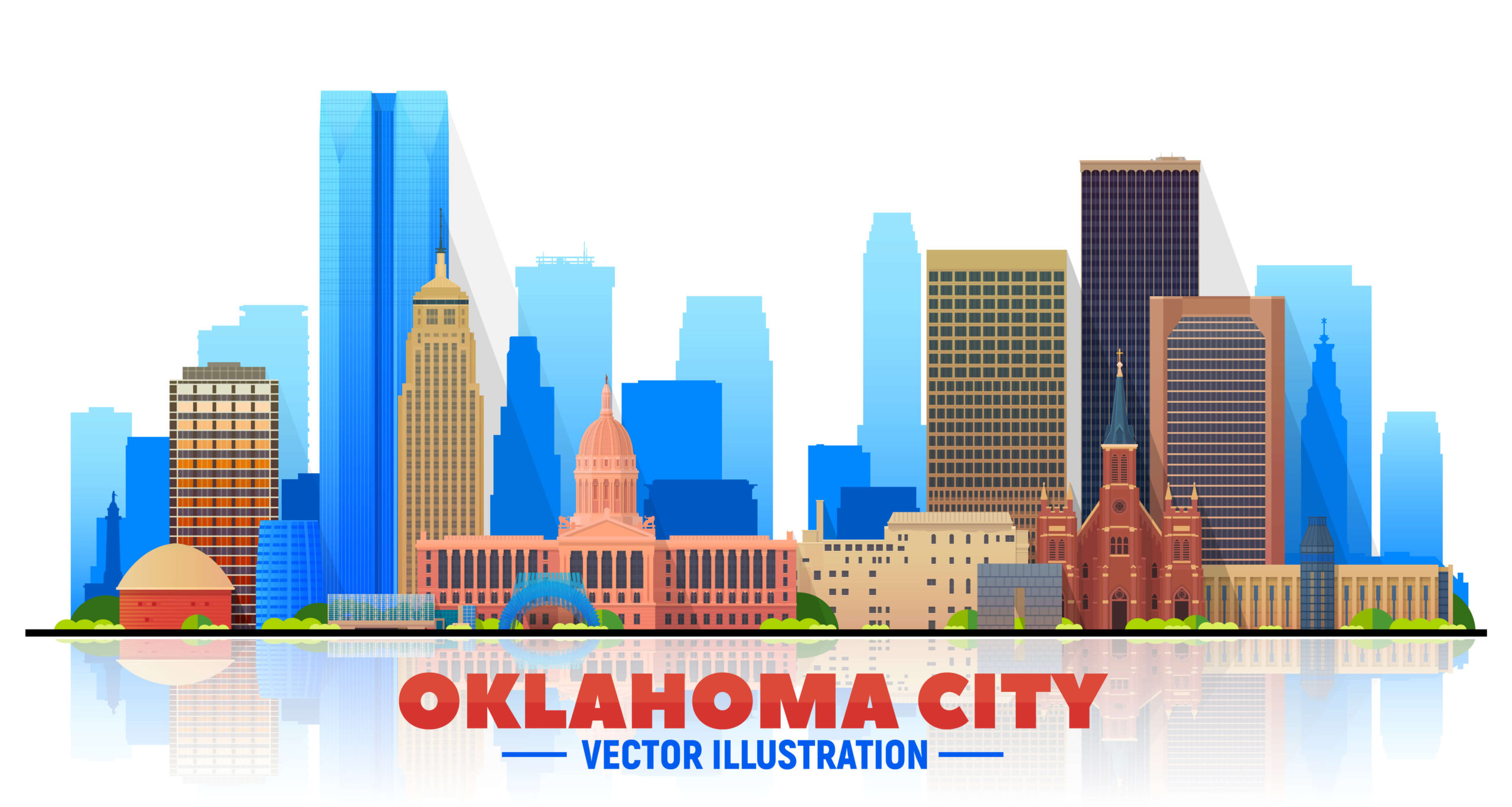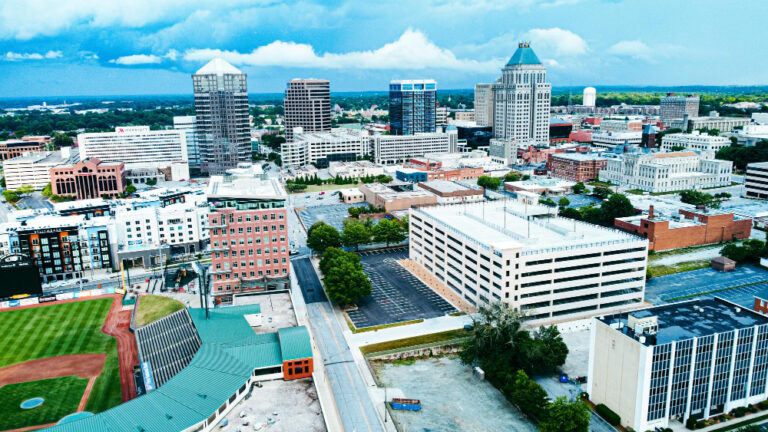Kansas City Skyline: A Blend of History, Culture, and Modernity

The Kansas City skyline, a symbol of both tradition and progress, stands as a testament to the rich history and vibrant culture of this Midwestern metropolis. This iconic skyline, marked by a mix of historic buildings, modern skyscrapers, and artistic landmarks, reflects the city’s evolution from a bustling hub of commerce in the 19th century to a contemporary urban center. In this article, we will explore the elements that make the Kansas City skyline unique, its historical significance, and its impact on the city’s identity.
A Glimpse into the Past: The Historical Roots of Kansas City’s Skyline
Kansas City’s skyline did not emerge overnight; it is the product of more than a century of architectural development. The city’s history as a transportation and industrial hub in the late 19th and early 20th centuries laid the groundwork for the skyline we see today.
One of the earliest and most significant contributions to the Kansas City skyline was the construction of the Kansas City Power and Light Building. Completed in 1931, this Art Deco masterpiece was the tallest building in Missouri at the time, standing at 36 stories. Its iconic lantern, which lights up the night sky, quickly became a symbol of the city’s ambition and growth. The Power and Light Building remains a cornerstone of the skyline of kansas city mo, representing Kansas City’s emergence as a major American city during the early 20th century.
Another historic landmark that contributes to the skyline’s charm is Union Station. Opened in 1914, this Beaux-Arts-style building was once the second-largest train station in the United States. Although its importance as a transportation hub has diminished, Union Station has been revitalized as a cultural and entertainment center, hosting museums, exhibitions, and events. Its grand architecture, with its massive arched windows and clock tower, adds a touch of elegance to the Kansas City skyline.
The Modern Skyline: A Reflection of Growth and Innovation
In recent decades, Kansas City has experienced a renaissance, marked by economic growth and urban revitalization. This resurgence is evident in the skyline, which has expanded to include new skyscrapers and developments that reflect the city’s forward-thinking spirit.
The most prominent addition to the modern skyline is the One Kansas City Place. Completed in 1988, this 42-story skyscraper is the tallest building in Missouri, reaching a height of 623 feet. Its sleek, modern design contrasts with the historic structures that surround it, symbolizing Kansas City’s embrace of contemporary architecture and innovation. One Kansas City Place is home to several major corporations, further cementing the city’s status as a business hub in the region.
Read More: Music Industry Essentials
Another notable structure that has transformed the Kansas City skyline is the Kauffman Center for the Performing Arts. Designed by renowned architect Moshe Safdie and opened in 2011, the Kauffman Center is an architectural marvel with its dramatic, shell-like design. The building houses two performance venues, the Muriel Kauffman Theatre and Helzberg Hall, and serves as a cultural beacon for the city. The Kauffman Center’s unique silhouette adds a modern, artistic flair to the skyline, symbolizing Kansas City’s commitment to the arts and culture.
The Bartle Hall Pylons, completed in 1994, are another modern addition to the skyline. These four 335-foot-tall towers, topped with futuristic-looking sculptures, support the roof of the Bartle Hall Convention Center. The pylons, designed by artist R.M. Fischer, have become an iconic feature of the Kansas City skyline, visible from miles away. They represent the city’s bold approach to urban design and its willingness to embrace unconventional architecture.
The Kansas City Skyline: A Cultural Landmark
Beyond its architectural significance, the Kansas City skyline holds deep cultural importance for the city’s residents and visitors alike. The skyline is more than just a collection of buildings; it is a symbol of the city’s identity, representing its history, diversity, and aspirations.
One of the most beloved cultural landmarks in the Kansas City skyline is the Liberty Memorial. Dedicated in 1926, the Liberty Memorial is a towering monument that honors the men and women who served in World War I. The memorial’s 217-foot-tall tower is visible from various points in the city, and its observation deck offers stunning panoramic views of the skyline. The Liberty Memorial is home to the National World War I Museum, making it a place of reflection and remembrance. For many Kansas Citians, the Liberty Memorial is a powerful symbol of the city’s dedication to honoring its history and the sacrifices of its citizens.
The Sprint Center, now known as the T-Mobile Center, is another cultural hub that has become an integral part of the Kansas City skyline. Opened in 2007, this state-of-the-art arena hosts concerts, sports events, and other major gatherings, attracting visitors from across the region. Its striking glass facade and modern design make it a standout feature of the downtown skyline. The T-Mobile Center is a testament to Kansas City’s vibrant entertainment scene and its role as a regional destination for music and sports.
The Crossroads Arts District, located just south of downtown, also contributes to the cultural vibrancy of the Kansas City skyline. This neighborhood, known for its galleries, studios, and street art, has become a creative hub that attracts artists and art lovers from all over. The district’s historic buildings, many of which have been repurposed into lofts, studios, and restaurants, add to the skyline’s eclectic mix of architectural styles. The Crossroads Arts District reflects Kansas City’s rich artistic heritage and its commitment to nurturing creativity and innovation.
The Kansas City Skyline at Night: A Beacon of Light
As the sun sets, the Kansas City skyline undergoes a transformation, with its buildings and landmarks illuminated in a dazzling display of light. The skyline at night is a sight to behold, offering a different perspective on the city’s architecture and its dynamic energy.
The Kauffman Center for the Performing Arts is particularly stunning at night, with its glass facade glowing against the dark sky. The building’s interior lights highlight its curvilinear design, making it appear as if it is floating above the city. The Kauffman Center’s nighttime illumination underscores its status as a cultural icon and a symbol of Kansas City’s commitment to the arts.
The Power and Light Building is another highlight of the nighttime skyline. Its iconic lantern, which changes colors depending on the occasion, serves as a beacon that can be seen from across the city. The building’s Art Deco details are accentuated by the lighting, giving it a timeless elegance that harks back to Kansas City’s past while looking forward to its future.
The Bartle Hall Pylons also come to life at night, with their sculptural elements glowing in various colors. The pylons’ nighttime lighting emphasizes their futuristic design and adds a touch of whimsy to the skyline. They serve as a reminder of Kansas City’s willingness to embrace bold, unconventional ideas and its commitment to pushing the boundaries of architectural design.
The Liberty Memorial, with its eternal flame, stands as a solemn and powerful presence in the nighttime skyline. The memorial’s lighting highlights its significance as a place of remembrance and reflection, offering a stark contrast to the bustling energy of downtown. The Liberty Memorial’s illumination serves as a poignant reminder of the sacrifices made by previous generations and the enduring legacy of those who served in World War I.
The Future of the Kansas City Skyline: A Vision of Progress
As Kansas City continues to grow and evolve, so too will its skyline. The city is currently experiencing a wave of development, with new projects and buildings set to reshape the skyline in the coming years. These developments reflect Kansas City’s commitment to progress and its vision for the future.
One of the most anticipated projects is the Three Light Luxury Apartments, a high-rise residential tower currently under construction in the downtown area. The building, which is part of the larger Power & Light District development, will feature modern amenities and stunning views of the city. Once completed, Three Light will add a new dimension to the Kansas City skyline, attracting residents and further revitalizing the downtown area.
Another significant development is the Loews Kansas City Hotel, which opened in 2020. This luxury hotel, located near the Kansas City Convention Center, features contemporary design and top-notch amenities. Its sleek, modern facade has already become a defining feature of the skyline, and its presence has bolstered Kansas City’s reputation as a destination for business and leisure travelers alike.
As the city looks to the future, sustainability and green building practices are expected to play a larger role in shaping the skyline. New developments will likely incorporate environmentally friendly design elements, such as green roofs, energy-efficient systems, and sustainable materials. These efforts will not only reduce the city’s environmental footprint but also ensure that the skyline remains a vibrant and livable space for generations to come.
Conclusion
The Kansas City skyline is more than just a collection of buildings; it is a reflection of the city’s identity, history, and aspirations. From the historic Power and Light Building to the modern Kauffman Center for the Performing Arts, each element of the skyline tells a story of Kansas City’s journey from a regional hub to a thriving urban center.
As the city continues to grow and evolve, its skyline will undoubtedly change, reflecting new developments and architectural trends. However, the essence of the Kansas City skyline—a blend of tradition and innovation, history and progress—will remain constant, serving as a beacon of the city’s enduring spirit and ambition.
Whether viewed from a distance or explored up close, the Kansas City skyline is a powerful symbol of what the city has achieved and what it aspires to become. For residents and visitors alike, it stands as a reminder of the unique character and charm that make Kansas City a truly special place.






